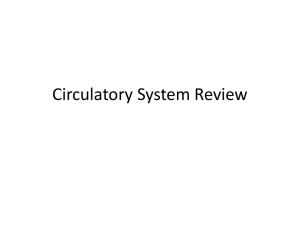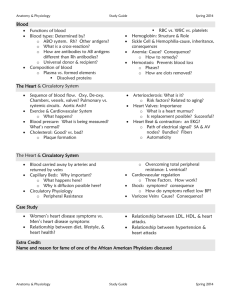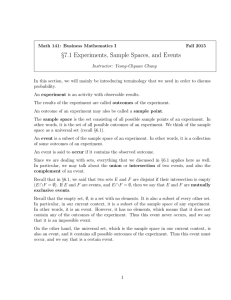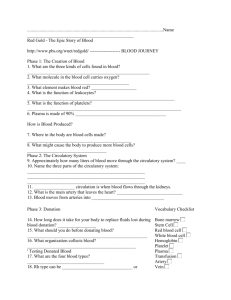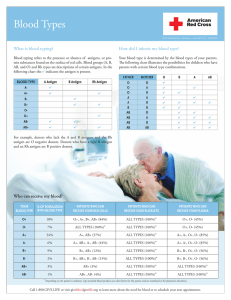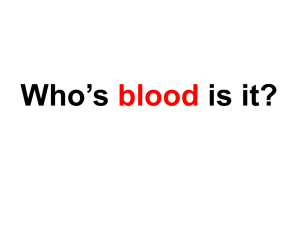Blood compatibility
advertisement
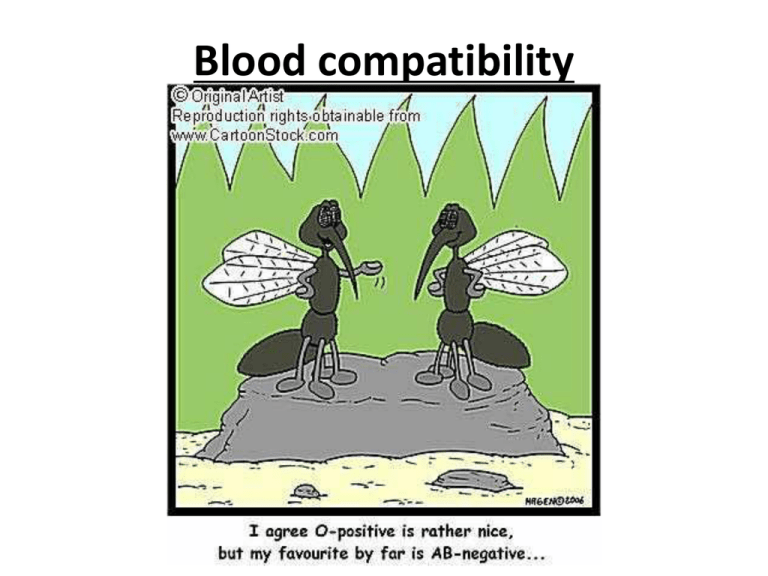
Blood compatibility Blood types • A blood type (also called a blood group) is a classification of blood based on the presence or absence of inherited antigenic substances on the surface of red blood cells Blood types There are four major blood types: A, B, AB, and O Antigens • There are two antigens, A and B. If you have the A antigen on the RBC, then you have type A blood. • When B antigen is present, you have type B blood. Antigens • When both A and B antigens are present, you have type AB blood. • When neither are present, you have type O blood. Rh blood group • In addition to the ABO blood group system, there is an Rh blood group system • The D antigen is the most common Rh antigen. If the D antigen is present, then that blood is Rh+. If the D antigen is missing, then the blood is Rh-. Blood compatibility • Not all blood types are compatible • There are universal donors and universal recipients In terms of RBC • O- (universal donor blood) • AB + (universal recipient) In terms of plasma Plasma extracted from type AB blood can be transfused to individuals of any blood group, but type O plasma can be used only by type O recipients Blood compatibility chart The Circulatory System • Moves nutrients, gases, and wastes to and from cells • Helps fight diseases • Stabilizes body temperature and pH • Humans have a closed system (blood never leaves the network of arteries, veins, and capillaries The Circulatory System The circulatory system consists of : • • • The heart Blood vessels Blood The Circulatory System • Includes pulmonary circulation- oxygen depleted blood carried away from heart to lungs and returns oxygenated blood to heart • Systemic circulation- carries oxygenated blood away from heart to rest of body and returns deoxygenated blood The Arteries, Veins, and Heart • Arteries take blood away from the heart • Veins bring blood back to the heart • The heart has four chambers- left atrium, left ventricle, right atrium, right ventricle

